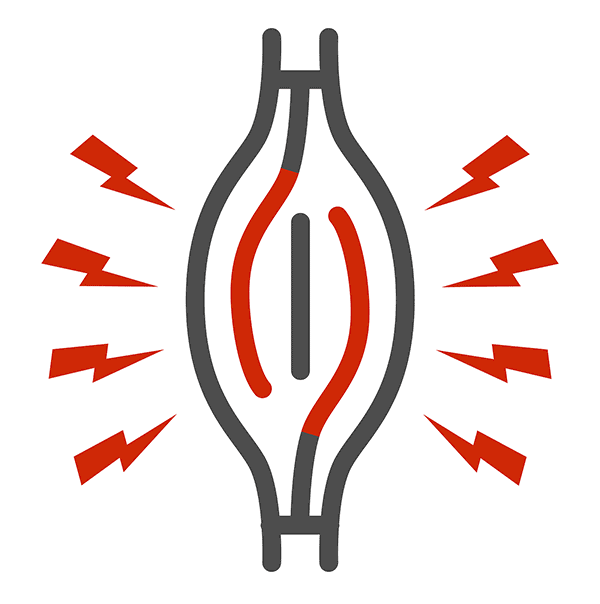Before looking at an answer to this question “Does Suboxone Cause Painful Muscle Jerks,” you should be aware that Suboxone according to the US Food and Drug Administration (FDA) contains buprenorphine, a partial opioid agonist, and naloxone, an opioid antagonist and is available for use to treat opioid dependence and pain.
Suboxone Side Effects: Tracing Mentions of Painful Muscle Jerks
Buprenorphine alone (Buprenex) can be a treatment for moderate to severe pain. As a sublingual tablet, its use is for induction treatment of opioid dependence.
Preparations that contain both buprenorphine and naloxone are for maintenance treatment for opioid dependence. Buprenorphine/naloxone is available under the trade names Suboxone, Zubsolv, Cassipa, and Bunavail, as well as generic products. Concerning the question of Suboxone and painful muscle jerks, we see common side effects of the drug listed as constipation, diarrhea, headache, and nausea but no mention of painful muscle jerks according to the drugs.com site.
Some of the possible side effects can require immediate attention. If any of these occur, the user should check with a doctor immediately while taking buprenorphine/naloxone also known as Suboxone.
For over 26 years, people from all over the world have chosen Waismann Method as their opioid detox provider.
We know the challenges you face and the importance of creating a unique and personal experience for you right from the start.Call for Detox Options 1-800-423-2482
More common side effects are the following but not painful muscle spasms according to drugs.com.
- chills
- cough
- feeling faint, dizzy, or lightheaded
- the feeling of warmth or heat
- fever
- flushing or redness of the skin, especially on the face and neck
- headache
- hoarseness
- lower back or side pain
- painful or difficult urination
- sweating
Undocumented Side Effects
Incidence of the following is not known so we can include painful muscle spasms in this category of an unknown and undocumented side effect according to drugs.com
- bloating or swelling of the face, arms, hands, lower legs, or feet
- darkening of the skin
- diarrhea
- difficulty swallowing
- dizziness
- fainting
- fast heartbeat
- hives, itching, skin rash
- loss of appetite
- mental depression
- nausea
- overactive reflexes
- poor coordination
- puffiness or swelling of the eyelids or around the eyes, face, lips, or tongue
- rapid weight gain
- restlessness shivering
- control tightness in the chest
- tingling of the hands or feet
- trembling or shaking twitching
- unusual weight gain or loss
- vomiting
You should be aware that Suboxone is a controlled substance and classified as a schedule three (III) prescription drug. Such a drug has an accepted medical use. However, the drug can cause physical or psychological dependence. The continues use of the drug can also lead to abuse and overuse.
Special rules apply to how a doctor can prescribe a schedule three (III) drug and how a pharmacist can dispense it. A doctor must first get special training and certification available through the U.S. federal government before the doctor can prescribe this drug and prescribe it for opioid dependence only.
Are Painful Muscle Spasms an Anecdotal Side Effect?

Side effects of Suboxone include the following with no mention of painful muscle spasms.
- mouth numbness
- pain
- headache
- dizziness
- numbness or tingling
- drowsiness
- sleep problems (insomnia)
- stomach pain
- vomiting
- constipation
- feeling drunk
- trouble concentrating
Get medical help right away if you have serious side effects of Suboxone as stated by rxlist.com with no mention of painful muscle spasms. Although, when people are withdrawing from opioid drugs, including Suboxone, they often suffer from muscle spasms. So maybe this type of side effect is caused not by the drug, but by the absence of it.
- fainting
- fast or irregular heartbeat
- severe dizziness
- mental/mood changes (such as agitation, confusion, hallucinations)
- slow or shallow breathing
- unusual drowsiness
- difficulty waking up
Reporting Side Effects to the FDA
Also, according to rxlist.com, you should know that this is not a complete list of side effects and others may occur. For medical advice about side effects, a user should talk with their doctor. Be aware that you may report side effects to the FDA at 1-800-FDA-1088.
Sources:
- Medscape: Buprenorphine (Rx)
- Buprenorphine/Naloxone Toxicity
- Medscape: Buprenorphine/Naloxone (Rx)
- Drugs.com:
- U.S. Department of Justice, Drug Enforcement Administration: Controlled Substance Schedules
- Medical News Today: Suboxone (buprenorphine and naloxone)
- RxList: Suboxone (Buprenorphine HCl and naloxone HCl) Side effects Drug Center
Written by Jeanette Evans
Jeanette Evans won an Apex Award for Publication Excellence several times and various awards from the Society for Technical Communication (STC) where she is an Associate Fellow. She has more than 26 years of experience as a professional writer working with major corporations such as Philips Medical and organizations such as the Cleveland Clinic and Case School of Medicine. She also was co-author of a column on trends in education for STC’s Intercom magazine and holds an M.S. in technical communication management.
Reviewed by Clare Waismann, Registered Addiction Specialist (RAS), Substance Use Disorder Certified Counselor (SUDCC), founder of Waismann Method® Advanced Treatment for Opiate Dependence and Domus Retreat®. Clare Waismann is an authority and expert on opioid dependence, opioid use disorder, substance dependence, detoxification treatments, detox recovery, and other topics covered on RapidDetox.com.






